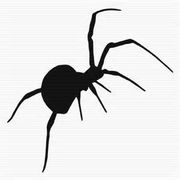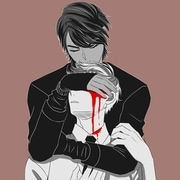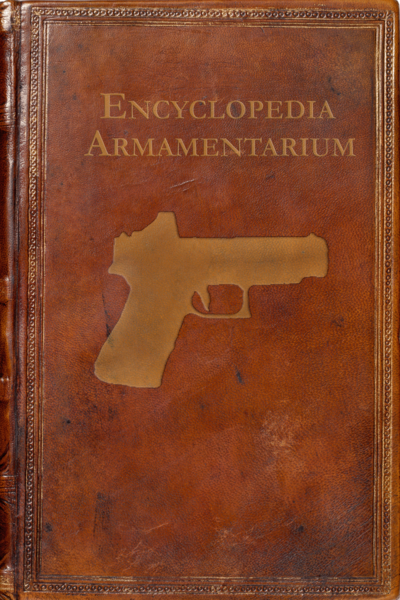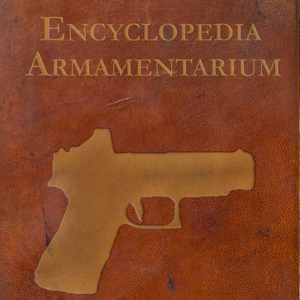We’re going to talk a lot about guns in this Encyclopedia. Whenever I talk about guns in any sort of formal or educational capacity, I always start by going over the basic rules of gun safety. If you’ve heard this song and dance before, fuck you, read it anyway. I’ve seen too many “experts” do stupid shit on the firing range and come within a hair’s breadth of getting themselves or someone else hurt. As for everyone else, here are the four commonly accepted rules of firearm safety, with some commentary from yours truly.
TREAT ALL GUNS AS IF THEY ARE LOADED. Far too many people are shot by “unloaded” guns. Therefore, there is no such thing as an unloaded gun until you have checked personally that all ammunition has been removed and that the chamber is empty. The first thing you should do when handed a weapon is check, personally, to see if it’s loaded or not. If you don’t know how to do that, you need to ask. Even once you’ve checked, you should still obey all rules of gun safety at all times, and if you put it down for any reason, you need to recheck when you pick it back up.
NEVER POINT A GUN AT SOMETHING YOU AREN’T WILLING TO DESTROY. No matter what, you should always have your weapon pointing in a safe direction, just in case. Yes, even if you’ve checked to make sure that it was unloaded. That includes friends, family, strangers, pets, and your genitals. Actually, go ahead with that last one. If you need to be told not to point a gun at your junk, you’re doing us all a favor if you take yourself out of the gene pool. “It was an accident” was no excuse. Accidentally pointing a gun at someone is called flagging. Flagging someone in the military is a good way to get your ass beat. I’m told that firing range ass beating is frowned on in the civilian world, but I do not give a hemorrhaging fuck. If you point a gun at someone on my range for any reason, I’m going to feed it to you. The easiest way to be mindful of where your muzzle is pointing is to pretend there’s an invisible laser beam shooting out of it that’ll cut through anything it touches. If you keep that in mind, you’ll be a lot more careful.
KEEP YOUR FINGER OFF THE TRIGGER UNTIL YOU ARE READY TO FIRE. Or, in military parlance, keep your booger hook off the bang switch. Trigger discipline is the simplest and easiest way not to shoot your buddy on accident. The only time your finger should ever even enter the trigger guard is when you’re moments away from squeezing the trigger, and as soon as you’re done shooting, you need to get it right the hell back out. It is technically possible for a gun to go off without the trigger being touched, but such cases are extremely rare, and if you follow rule #2, no one gets hurt. For the most part, though, when the gun goes bang, it’s because you touched the trigger, whether you meant to or not. Until you instinctively get it right 100% of the time, you have no business handling a live firearm except under close supervision.
ALWAYS BE SURE OF YOUR TARGET AND WHAT’S BEHIND IT. Okay, so you’ve followed steps 1-3. Your gun is loaded (you checked), you’re pointing it at something you want to kill, and you’ve got your finger on the trigger. You’re good to go, right? Hold up just a second there, partner. When you squeeze the trigger, you’re liable for the bullet from the moment it leaves the barrel until it finds its final resting place. Are you comfortable hitting whatever is behind your target, or around it? Bullets don’t just magically stop when they hit something. Even if they do hit something like steel that can stop them cold, they tend to shatter and send little fragments flying everywhere. Either way, you don’t want to be that guy. Don’t shoot if you’re not sure.
That covers the four biggest rules of firearm safety. When operated in a safe and responsible manner, guns are a hell of a lot of fun. It’s when people get stupid or complacent that tragedy strikes. That’s why any responsible instructor will drill those rules into your head before you ever set foot on the range, and no matter how many times you’ve heard them, a responsible shooter will pay attention.
Knowing and following the rules of gun safety is also a good way to show that a character knows what they’re doing. You don’t have to preach at the audience, either. Simply noting that they check the chamber and keep their finger off the trigger can subtly let the audience know that they know what’s up. It’s an especially effective way to signal that a pacifist character might have a darker past than they let on, too. On the flip side, it’s also an excellent way to show that a character is a complete amateur. Bonus points if they’ve made themselves out to be a badass and someone has to come along and tell them to stop flagging their buddies.
Speaking of bonus points, there are other rules of firearm safety. Those 4 are the big ones, the ones that everyone needs to know on an instinctual level, but they’re not the only ones. In no particular order, here are a few more:
Do not mix guns and booze. I feel like this should go without saying, but I’ve seen far too many idiots swilling beer and shooting skeet for my liking. If you’ve had enough to drink that you’d be nervous if you got pulled over, don’t play with your guns. The same goes with other recreational drugs. Considering that simply getting caught with a gun and weed at the same time is a really good way to go to prison for a really long time, the two really don’t mix.
Do not shoot at or around bodies of water. Bullets do weird things when they hit water. At some angles, they’ll dive in and lose all their velocity within a few feet. At others, they’ll skip off the surface in all sorts of wild and unpredictable directions, including back at the shooter. They can also travel a lot longer over an open body of water than you might think. You may only practice shooting your 9mm at 3 meters, but it can yeet a bullet for over 3 miles under the right circumstances. Most rifle rounds can go even further. It’s questionable whether or not they’ll do any more damage than a thrown rock at that range, but you don’t want to take that chance.
You are not that guy. If the idea of doing something with a gun makes you feel like a badass just thinking about it, don’t do it. Do not show someone else your gun to “make them feel safe.” Do not attempt to intervene in situations where you don’t belong. If you saw it in a movie or TV show, just assume it’s a bad idea. The only time you should ever draw your weapon in public is in immediate defense of self and others. For example: if a lion has escaped from the zoo and is seconds away from eating your butthole, you may shoot. If you hear gunshots from a few blocks away and think “wow, that sounds remarkably like someone trying to stop a lion from eating their butthole,” the correct response is not to go see what’s going on. Unless you're a trained first responder, the best thing you can do is call emergency services and go the other way. If at all possible, avoid adding more mayhem to what is likely an already confusing situation.
Combat cleavage: bad idea. Look. I am all in favor of breasts being displayed as openly and proudly as the bearer so desires. Big ones, small ones, natural or augmented, they’re all wonderful, and they all brighten my day immeasurably. But, and it pains me a great deal to say this, there is a time and a place for everything. The firing range, or any place with the expectation of gunfire, is not the place to show them off. The key word in firearm, you’ll note, is fire. The process of firing a firearm (there it is again) produces a lot of heat. Much of that heat gets transferred to the shell casing, the bit of spent brass that the gun flings out when it’s done firing a bullet. Those hot bits of brass go spinning through the air and, through what could only be described as the work of a malicious deity, always seem to land in the most damnedest place possible. Much like the eyes of a teenage boy on day 28 of No Nut November, that all too often ends up being right between the nearest pair of boobs. Not only does the hot brass burn like the dickens and often leave scars, it has a nasty tendency to make you forget about everything else. Like, say, the loaded gun in your hand. Obviously, this is not the best time or place to have to hakuna your tatas. So, please. For everyone’s sake. Wear something with a higher neckline.
Are there any other rules, I hear you ask. Anything else we should know, or can we fucking get to the point?
Well, yes and no.
No, because I’m not going to list every single thing that comes to mind right here and now. I reserve the right to add to the list as necessary; best practices are always changing as the gun community finds and addresses potential problems. It wasn’t all that long ago that the 4 big rules were the 3 big rules.
But yes, because there is one final thing I’m going to cover, though it’s not an official rule. It’s not something that can be taught, at least not well. I can describe it to you, but the only way to really learn is to go out and do. You’re going to have to mess up, and you’re going to have to want to not do it again badly enough to learn from your mistakes. And you’re going to have to keep doing this over and over again, until you finally get it.
What’s this mysterious final rule? Whenever possible, exercise common sense. I know, common sense isn’t common these days, but that doesn’t mean you can’t try to cultivate some. And, it doesn’t take a genius to realize that they’re watching someone try to win themselves a Darwin Award.
If something looks stupid or dangerous, it probably is. If the person doing or telling you to do something that looks stupid or dangerous is your instructor, give them exactly one chance to explain how it isn’t. If their explanation doesn’t hold up to a cursory examination, they’re full of shit and you need to leave. The same goes for range time with friends, or watching videos on YouTube, for that matter. There are a lot of frauds and dumbasses out there, and the best defense you have against them is to be smarter than the average potato. That, and have the guts to ask questions and call them out for their bullshit. If you can pull that off, you’ll probably be alright.











Comments (10)
See all